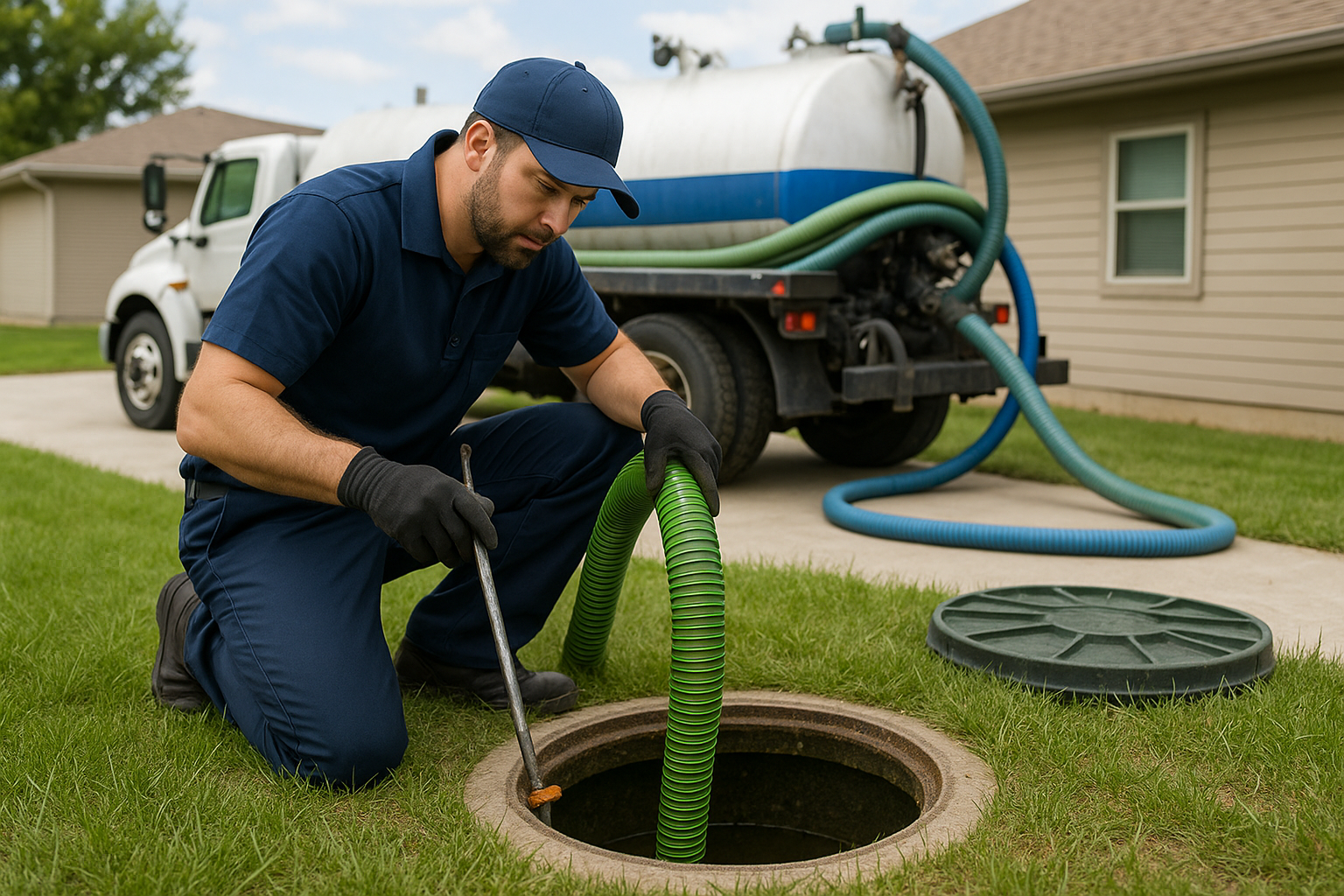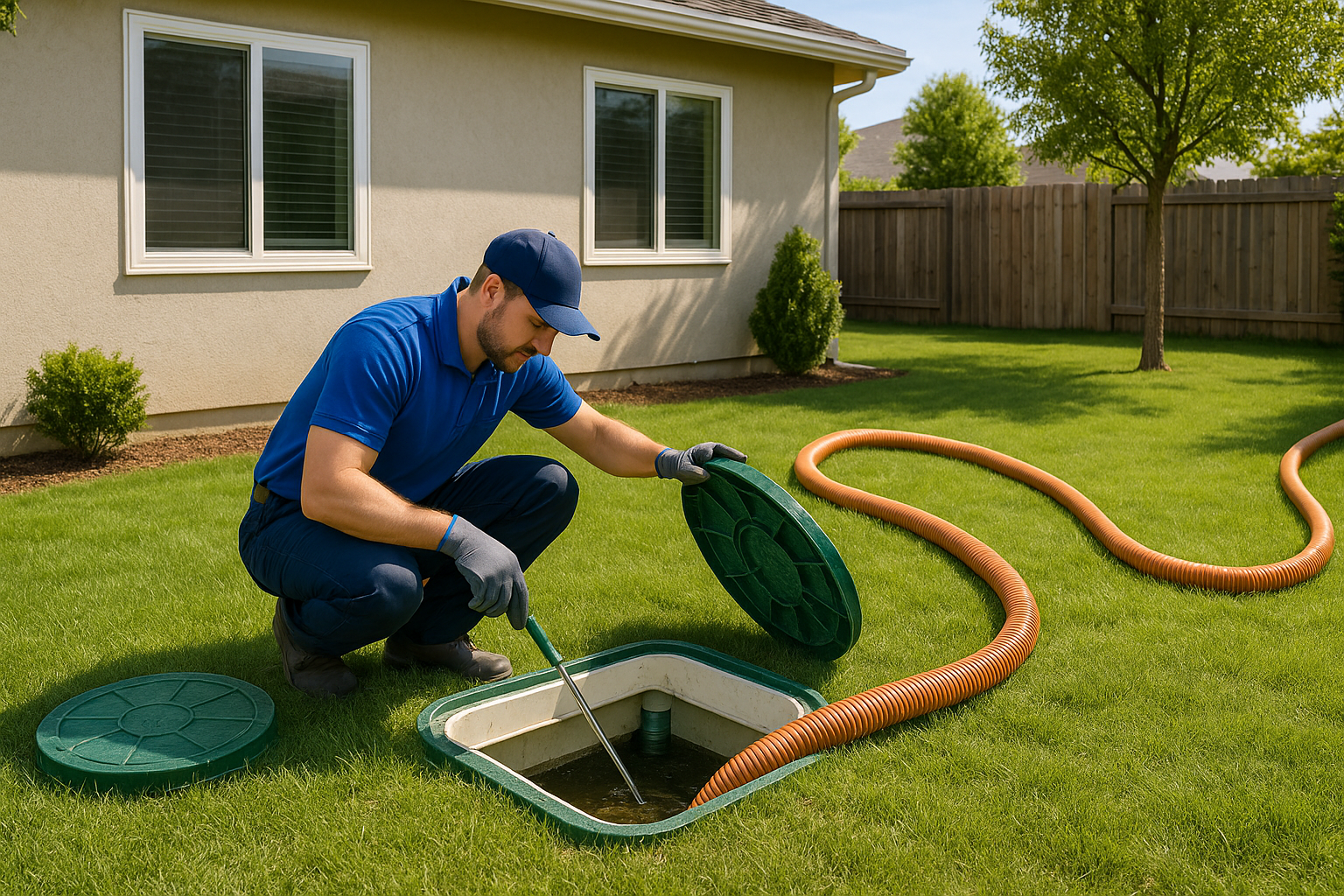What Happens During Septic System Cleaning in Sacramento
Most homeowners do not think much about their septic tank until slow drains, gurgling pipes, or unpleasant yard odors appear. If you have scheduled septic system cleaning for the first time, it is normal to feel unsure about what the service involves. Because septic systems operate underground and out of sight, the process can seem confusing or overwhelming.
The good news is that septic system cleaning is simple when performed by trained experts. Understanding what to expect gives you confidence and peace of mind, especially since a well-maintained system prevents backups, avoids costly repairs, and protects your Sacramento property. Trusted resources such as Bob Vila and HouseLogic also highlight the benefits of regular cleaning.
In this guide, we walk through each stage of the process. You will learn what technicians do when they arrive, how they locate, pump, and clean your tank, which warning signs indicate deeper issues, and how to maintain your system afterward. By the end, you will know exactly what to expect and how to keep your septic system running smoothly year-round.
Understanding How Professional Septic Cleaning Works
Before reviewing the step-by-step process, it is helpful to know what septic system cleaning truly involves. Many people assume it is simply septic tank pumping, but professional service includes thorough cleaning, task-specific inspections, and a complete evaluation of system health.
A septic system contains a tank, inlet and outlet pipes, baffles, and a drain field, all working together to treat wastewater. When solids accumulate, they must be removed to prevent waste from reaching the drain field. This is why regular septic system cleaning Sacramento services every 2 to 5 years are essential. For guidance on timing, the EPA provides helpful homeowner recommendations.
A proper service benefits you by:
• Reducing the risk of sewage backups
• Improving system performance and lifespan
• Identifying early structural or mechanical issues
• Preventing soil or groundwater contamination
Understanding these fundamentals makes it easier to plan routine septic tank cleaning and avoid emergencies.
Step-by-Step Process: What to Expect During Septic System Cleaning
A professional cleaning follows a clear process that ensures thorough waste removal and system safety.
Step 1: Preparing the Site for Safe Cleaning Procedures
The first step focuses on safely accessing your septic tank. The technician will locate the tank using maps, probing tools, prior documentation, or tank locating and outlet baffle replacement services if needed.
Once the lid is found, they expose it carefully, avoiding unnecessary yard disruption. They also check the condition of the cover and surrounding soil to ensure the pump truck hose can operate safely.
Pro Tip: Clearing bushes or debris around the tank beforehand can speed up the process.
Step 2: Opening the Tank and Checking Internal Components
Next, the technician opens the lid to begin a septic tank inspection. This is important because it reveals early warning signs such as corrosion, cracks, damaged baffles, or heavy scum layers. They also check the liquid level to confirm that the system is working properly.
Visual inspections or camera tools may be used to examine the tank’s internal compartments and flow pattern.
Pro Tip: Avoid attempting this on your own because harmful gases inside the tank require professional handling.
Step 3: Pumping Out Waste and Sludge Accumulation
This is the stage most homeowners are familiar with. The technician performs septic tank pumping by inserting a heavy-duty hose into the tank to remove wastewater, sludge, and scum. They break apart solids to ensure full removal and may use backflushing to dislodge tough buildup.
Understanding how much to empty a septic tank can help you anticipate future services. During this process, the technician can show you before-and-after levels so you know exactly what was removed.
Step 4: Cleaning the Tank Walls and Ensuring Full Waste Removal
Once pumping is complete, true septic system cleaning begins. This involves rinsing, scraping, or jetting the tank walls to eliminate remaining buildup. Cleaning the interior helps restore full capacity and improves long-term system performance.
This is also where the structural integrity of the tank is assessed in more detail.
Pro Tip: Choosing full cleaning rather than pumping alone extends system life and reduces the risk of drain field damage.
Step 5: Inspecting the Baffles, Filters, and Outlet Pipes Carefully
Before closing the tank, the technician conducts a detailed inspection of the inlet and outlet baffles, the effluent filter, and all interior surfaces. These components ensure solids remain in the tank rather than reaching the drain field.
If repairs or updates are needed, you will receive recommendations. Replacing a worn filter is far more affordable than drain field restoration.
Pro Tip: Many homeowners add septic risers and new lids to make future access easier.
Step 6: Finalizing the Service and Advising on Next Maintenance Steps
Finally, the technician closes the tank, restores the ground, and provides a report summarizing what they found. This helps you plan future septic tank cleaning and understand how often does a septic tank have to be emptied based on your household size and usage.
You also receive documentation, which is helpful for maintenance records or real estate transactions. Professional services like septic tank cleaning and pumping and real estate septic inspections offer reliable long-term support.
Pro Tip: Ask how full your tank was before pumping to better estimate your next cleaning date.
Practical Applications of Professional Septic Cleaning in Sacramento
Septic system cleaning is especially important for Sacramento homeowners due to soil composition and seasonal water levels.
Older homes with aging systems benefit from frequent cleaning to reduce stress on weakened components. Many homeowners notice faster drains and fewer odors after routine service.
Commercial properties, such as restaurants or event venues, rely on more frequent septic tank pumping because of higher waste volume. Staying ahead of maintenance reduces the chance of shutdowns or health violations. Reliable guidance from Forbes Home further supports proactive care.
Rural properties hosting events or large gatherings also require scheduled cleaning to prevent system overload. In these cases, having lift station pumping available is essential for high-demand systems.
In every case, proper septic service ensures long-term stability and cost savings.
Best Practices and Common Mistakes During Septic Care
Routine care extends the life of your system and prevents costly repairs. Below are important habits to follow after septic tank cleaning.
• Avoid flushing wipes, grease, harsh chemicals, and feminine products. These items cause clogs and increase septic tank cleaning cost over time.
• Schedule routine inspections every 1 to 2 years to identify early issues.
• Avoid parking vehicles or placing heavy structures over the drain field.
• Use water efficiently by spacing laundry loads and repairing leaks.
• Keep a simple log of cleaning dates to track how often does a septic tank have to be emptied in your household.
For more maintenance guidance, visit septic tank care tips.
Final Thoughts: Keeping Your Septic System Healthy and Reliable
Septic system cleaning is one of the most important steps you can take to safeguard your home, your property, and your family’s health. Understanding the process helps you feel prepared and ensures your system receives proper care.
Regular cleaning prevents backups, reduces repair costs, and keeps your system operating efficiently. By working with one of the best septic tank cleaning services in Sacramento and maintaining smart habits, your system can last for decades.
Frequently Asked Questions About Septic System Cleaning
1. How often should I schedule septic system cleaning in Sacramento?
Most homes need septic system cleaning every 2 to 5 years. Household size and tank capacity influence how often does a septic tank have to be emptied.
2. What are signs my septic tank needs cleaning soon?
Slow drains, gurgling pipes, sewage odors, saturated soil, or backups indicate the tank may be full.
3. Is septic tank pumping the same as septic system cleaning?
No. Pumping removes liquids and sludge. Cleaning includes rinsing tank walls, checking components, and ensuring no buildup remains.
4. How long does septic cleaning take?
Most appointments take 45 to 90 minutes, depending on tank size and buildup levels.
5. Can I clean my septic system myself?
DIY cleaning is unsafe and incomplete. Professional septic pumping cost is far more affordable than repairing system damage caused by improper handling.






